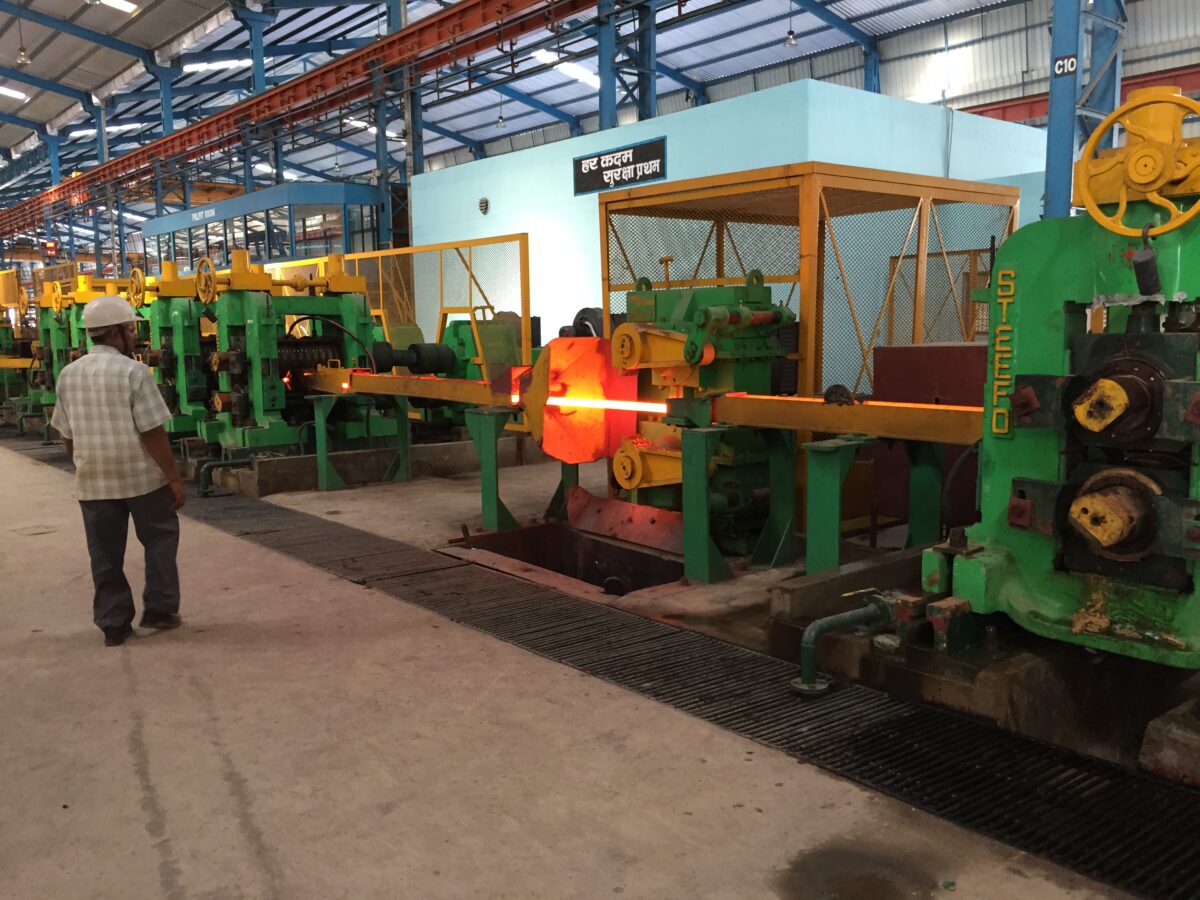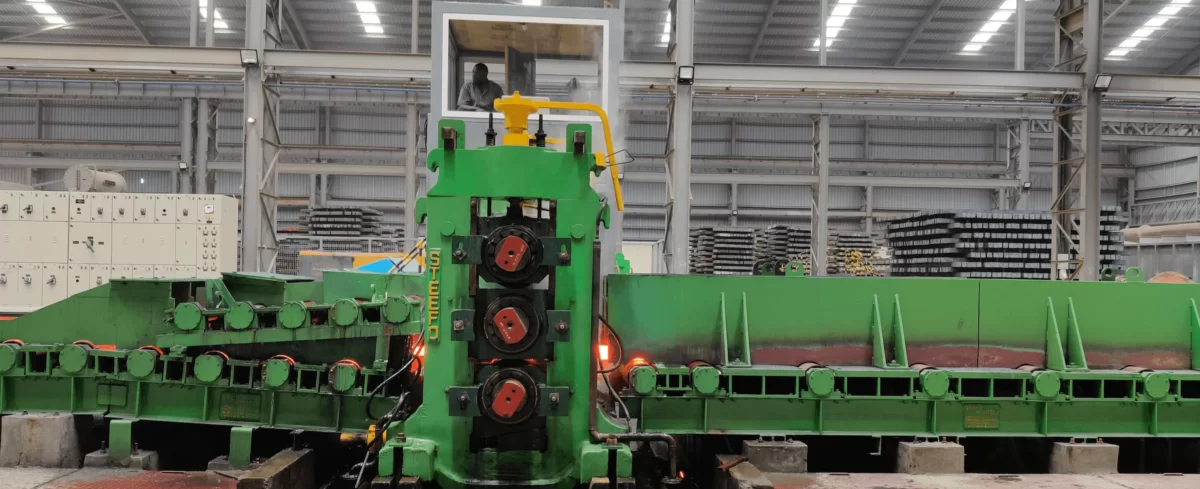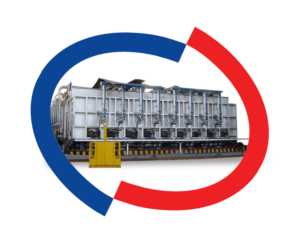In the fast-paced and demanding steel rolling mill industry, maintaining the efficiency of your machinery is paramount. Among the critical components of this industry are shearing machines. These machines play a pivotal role in ensuring the quality and precision of steel products.
To keep your rolling mill operations running smoothly and efficiently, it’s imperative to maintain your shearing machines effectively. This guide delves into the importance of these machines and essential precautions when operating them and provides step-by-step instructions on maintaining them for optimal performance.
Why Is A Shearing Machine So Important in the Rolling Mill Industry?
Precision Cutting
Shearing machines are integral to the steel rolling mill industry due to their unparalleled precision in cutting steel products. In an industry where the quality of the final product is essential, the ability to make clean, precise cuts is indispensable. These machines excel in providing accurate cuts, ensuring that the steel products meet the required specifications.
Enhancing Productivity
Efficiency is the linchpin of any steel rolling mill. Shearing machines significantly enhance productivity by cutting steel at predetermined lengths swiftly and accurately. This saves time and reduces material wastage, making your operations more cost-effective.
Safety and Operator Convenience
Shearing machines come equipped with safety features that protect operators from potential hazards. These features often include safety covers, emergency stop buttons, and other safety mechanisms. Moreover, modern machines boast user-friendly interfaces, making them easier for operators to control and monitor, further enhancing safety. The semiotics design of our machinery intuitively induce safety.
Reducing Downtime
Regular maintenance of shearing machines can prevent unexpected breakdowns and downtime, ensuring that your rolling mill operates seamlessly. By following the right maintenance procedures, you can extend the lifespan of your machines and maximize their efficiency, effectively minimizing costly interruptions.
Precautions When Operating a Shearing Machine
Before delving into the maintenance aspect, it’s crucial to highlight some essential precautions that should be taken when operating a shearing machine to ensure the safety of your workforce and the longevity of your equipment.
Check All Coverings and Safety Features Regularly
The cornerstone of safety in shearing machine operation lies in regular inspections of safety covers, emergency stop buttons, and other safety features. Any damaged or malfunctioning safety components should be repaired or replaced immediately. Failure to do so can pose significant risks to operators and lead to accidents that can be both harmful and costly.
Wear Suitable Clothes
Operators should always wear appropriate protective gear when working with these machines. This includes safety glasses, gloves, and protective clothing to shield against potential flying debris or splinters. Ensuring operators are well-equipped with safety gear is a fundamental step in preventing accidents and maintaining a secure working environment.
Use Bright Lighting
A well-lit workspace is not just a matter of convenience. It’s a safety imperative when operating a shearing machine. Proper lighting ensures operators can see the cutting area clearly and identify potential issues. Adequate lighting is crucial for safety and achieving precise cuts, as it allows operators to work with confidence and accuracy.
Conduct Routine Machine Inspections
Frequent inspections of your shearing machine are key to identifying and addressing any maintenance issues before they escalate. These assessments should be thorough, covering the condition of blades, hydraulics, electrical systems, and any other critical components. Regular maintenance checks help prolong the life of the machine and prevent costly breakdowns, ultimately leading to a more efficient operation.
Steps to Maintain Your Shearing Machine Effectively
1. Lubrication
Proper lubrication is the lifeblood of your shearing machine. It prevents excessive friction, wear, and tear on moving parts. Regularly inspect and lubricate the bearings, gears, and other critical components according to the manufacturer’s recommendations. Using the correct type and amount of lubricant is crucial for optimal performance, as insufficient lubrication can result in premature wear and decreased efficiency.
2. Blade Maintenance
Blades are the heart of a shearing machine, and their condition directly affects the quality of the cuts. Periodically inspect the blades for wear, nicks, or damage. If you notice any issues, sharpen or replace the blades promptly. Dull or damaged blades not only compromise the quality of cuts but also put extra strain on the machine, potentially leading to more significant problems.
3. Hydraulic System
The hydraulic system is the powerhouse of these machines. Check the hydraulic fluid levels regularly and top up as needed. Inspect hydraulic hoses and connections for leaks and wear. Any signs of system issues should be addressed promptly to prevent performance degradation and maintain the reliability of your machine.
4. Electrical Systems
Ensure that all electrical components, including wiring, switches, and control panels, are in good working condition. Loose or damaged electrical connections can lead to operational disruptions and pose safety risks. Regularly inspect and maintain the electrical systems to keep your machine running smoothly. This includes checking for signs of wear, corrosion, or loose connections.
5. Cleanliness
A clean machine is a happy machine, and cleanliness is crucial to maintaining your shearing machine‘s efficiency. Regularly clean the entire machine, removing dust, debris, and metal shavings that can accumulate in and around the cutting area. This improves performance, reduces the risk of fire hazards, and ensures a safer working environment.
6. Alignment
Proper alignment is critical for achieving precise cuts consistently. Periodically check and adjust the blade alignment to meet the required specifications. Misaligned blades can result in uneven cuts and may cause premature wear of the machine. Regular alignment checks are essential for maintaining the quality and accuracy of your steel products.
7. Operator Training
Investing in training programs for your machine operators is an investment in safety and efficiency. Well-trained operators are more likely to identify early signs of issues and operate the machine efficiently. They can also contribute to the overall safety of the workspace by understanding how to respond to potential emergencies and operate the equipment safely.
8. Record Keeping
Maintain comprehensive records of all maintenance activities, inspections, and repairs performed on your shearing machine. This documentation is a valuable resource for tracking the machine’s history, identifying recurring issues, and effectively scheduling preventive maintenance. A well-organized record-keeping system helps ensure that no critical maintenance tasks are overlooked.
9. Preventive Maintenance Schedule
Developing a preventive maintenance schedule tailored to your specific shearing machine model and usage is essential. Regularly consult the manufacturer’s recommendations for maintenance intervals and follow them diligently. This helps address potential problems before they become major issues, saving you time, money, and headaches in the long run.
10. Professional Servicing
In addition to routine maintenance tasks, consider scheduling professional servicing and inspections by certified technicians. Their expertise can uncover hidden issues and ensure your shearing machine operates efficiently. Professional servicing is an investment that pays dividends in the form of prolonged machine life and minimize downtime.
We Manufacture Different Types of Quality Shearing Machines
Flying Dividing Shear
Key Features:
- Designed for continuous cutting of hot and cold steel materials
- High-speed cutting for increased productivity
- Precision control for clean and accurate cuts
- Built-in safety features to protect operators and equipment
The flying dividing shear is an ideal choice for steel rolling mills that demand speed, precision, and reliability in their cutting processes. It ensures seamless material flow and precise cuts, enhancing overall productivity.
Continuous Shear
Key Features:
- Continuous cutting for non-stop production
- Suitable for a wide range of steel products
- Robust construction for durability
- Low maintenance requirements
Continuous shears are the workhorses of steel rolling mills designed to handle high-volume production without interruption. These machines are built to withstand the rigours of continuous operation, making them a dependable choice for steel manufacturers.
End-Cutting Crop and Cobble Shear
Key Features:
- Designed for cropping the ends of steel bars and eliminating cobbles
- Ensures clean and uniform cuts
- Reduces material waste
- Enhances the quality of finished products
The end-cutting crop and cobble shear are crucial in improving the quality of your steel products. By eliminating irregularities and ensuring clean cuts, this shear contributes to the overall efficiency of your rolling mill.
Cold Shear
Key Features:
- Specifically designed for cutting cold steel
- Ensures precise cutting without compromising material integrity
- High durability and low maintenance
- Safety features for operator protection
Cold shears are indispensable when it comes to cutting cold steel materials. They are designed to maintain the integrity of the material while delivering clean and accurate cuts, making them an essential addition to your rolling mill.
Rotary Shear
Key Features:
- Ideal for cutting steel coils and sheets
- High-speed cutting capability
- Versatile and suitable for various steel products
- Enhanced safety features for operator well-being
Rotary shears are the go-to choice for efficiently cutting steel coils and sheets. Their versatility and high-speed cutting capabilities make them valuable assets in steel rolling mill operations.
Emergency Shears
Key Features:
- Designed for immediate response in case of emergencies
- Equipped with rapid shut-off mechanisms
- Ensures operator safety during critical situations
- Robust construction for reliability
Safety is a top priority in any steel rolling mill. Emergency shears are specially designed to respond swiftly in critical situations, providing operators with the means to shut down machinery safely, thereby preventing accidents and minimising risks.
Crank Shears
Key Features:
- Manual shearing for precise control
- Suitable for various steel products
- Robust construction for durability
- Easy to operate and maintain
Crank shears offer operators precise control over the cutting process. Their manual operation ensures that cuts are made precisely where needed, making them a valuable addition to steel rolling mills that require precision.
Hydraulic Shear
Key Features:
- Powered by hydraulics for consistent force and accuracy
- Suitable for a wide range of steel materials
- Enhanced safety features
- Low maintenance requirements
Hydraulic shears are known for their consistent cutting force and accuracy. They are versatile and can handle various steel materials, making them an excellent choice for steel rolling mills aiming for efficiency and quality.
Hydraulic Cold Shear
Key Features:
- Specifically designed for cutting cold steel
- Hydraulic power for precise and reliable cutting
- Enhanced safety features for operator protection
- Minimal maintenance requirements
Hydraulic cold shears are tailored for cutting cold steel materials while maintaining precision and operator safety. Their hydraulic power ensures consistent and reliable cutting performance.
Trust the Expertise of The Steefo Group
At The Steefo Group, we understand that each steel rolling mill has unique requirements. That’s why we offer a comprehensive range of shearing machines to cater to your specific needs. Our machines are designed with precision, durability, and safety, ensuring that your steel rolling mill operates efficiently and delivers high-quality products consistently.
Whether you need the speed and precision of a flying dividing shear, the continuous reliability of a continuous shear, or the precision cutting of a hydraulic shear, we have the right shearing machine for you.
Trust Steefo to be your partner in achieving excellence in steel rolling mill operations. We offer complete rolling mill solutions to cater for your needs. Contact us at +91 98240 76873 or +91 87589 98607 for a free consultation. Alternatively, you can email us at marketing@thesteefogroup.com for any inquiries. We will be happy to assist you.







